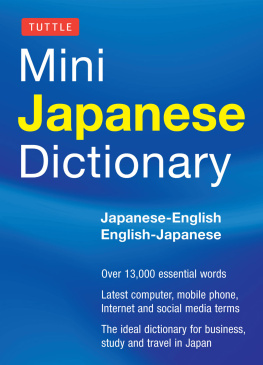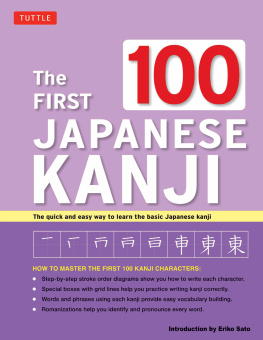
 Copyright 2013 by The McGraw-Hill Companies, Inc. All rights reserved. Except as permitted under the United States Copyright Act of 1976, no part of this publication may be reproduced or distributed in any form or by any means, or stored in a database or retrieval system, without the prior written permission of the publisher. ISBN: 978-0-07-179772-6
Copyright 2013 by The McGraw-Hill Companies, Inc. All rights reserved. Except as permitted under the United States Copyright Act of 1976, no part of this publication may be reproduced or distributed in any form or by any means, or stored in a database or retrieval system, without the prior written permission of the publisher. ISBN: 978-0-07-179772-6
MHID: 0-07-179772-6 The material in this eBook also appears in the print version of this title: ISBN: 978-0-07-179771-9, MHID: 0-07-179771-8. All trademarks are trademarks of their respective owners. Rather than put a trademark symbol after every occurrence of a trademarked name, we use names in an editorial fashion only, and to the benefit of the trademark owner, with no intention of infringement of the trademark.
Where such designations appear in this book, they have been printed with initial caps. McGraw-Hill eBooks are available at special quantity discounts to use as premiums and sales promotions, or for use in corporate training programs. To contact a representative please e-mail us at bulksales@mcgraw-hill.com. TERMS OF USE This is a copyrighted work and The McGraw-Hill Companies, Inc. (McGraw-Hill) and its licensors reserve all rights in and to the work. Use of this work is subject to these terms.
Except as permitted under the Copyright Act of 1976 and the right to store and retrieve one copy of the work, you may not decompile, disassemble, reverse engineer, reproduce, modify, create derivative works based upon, transmit, distribute, disseminate, sell, publish or sublicense the work or any part of it without McGraw-Hills prior consent. You may use the work for your own noncommercial and personal use; any other use of the work is strictly prohibited. Your right to use the work may be terminated if you fail to comply with these terms. THE WORK IS PROVIDED AS IS. McGRAW-HILL AND ITS LICENSORS MAKE NO GUARANTEES OR WARRANTIES AS TO THE ACCURACY, ADEQUACY OR COMPLETENESS OF OR RESULTS TO BE OBTAINED FROM USING THE WORK, INCLUDING ANY INFORMATION THAT CAN BE ACCESSED THROUGH THE WORK VIA HYPERLINK OR OTHERWISE, AND EXPRESSLY DISCLAIM ANY WARRANTY, EXPRESS OR IMPLIED, INCLUDING BUT NOT LIMITED TO IMPLIED WARRANTIES OF MERCHANTABILITY OR FITNESS FOR A PARTICULAR PURPOSE. McGraw-Hill and its licensors do not warrant or guarantee that the functions contained in the work will meet your requirements or that its operation will be uninterrupted or error free.
Neither McGraw-Hill nor its licensors shall be liable to you or anyone else for any inaccuracy, error or omission, regardless of cause, in the work or for any damages resulting therefrom. McGraw-Hill has no responsibility for the content of any information accessed through the work. Under no circumstances shall McGraw-Hill and/or its licensors be liable for any indirect, incidental, special, punitive, consequential or similar damages that result from the use of or inability to use the work, even if any of them has been advised of the possibility of such damages. This limitation of liability shall apply to any claim or cause whatsoever whether such claim or cause arises in contract, tort or otherwise.
CONTENTS
AUDIO TRACK LISTING
ACKNOWLEDGMENTS
I am grateful to Karen Young and the other editors and staff at McGraw-Hill for their professional assistance and warm encouragement.
INTRODUCTION
Most people think that it would be wonderful if they could speak one or more foreign languages and communicate directly with people in other countries, travel around the world without an interpreter, explore many different cultures, and learn about many different ways of thinking and living.
Our knowledge of foreign languages will definitely widen our horizon and increase our future professional career opportunities. Some people also just enjoy learning foreign languages. There are many differences, but also many similarities among languages. Once you learn one foreign language, the second one will be much easier to learn. Because you are reading the introduction of Japanese Demystified, you must be thinking about studying Japanese, for whatever reason. You may be interested in Japanese traditional, contemporary, or pop culture, for example, karate, cooking, magna, or anime.
You may be a high school or college student who is studying Japanese in a classroom or by yourself. You may be thinking of taking a nationwide Japanese proficiency test to boost your opportunities for college admission or employment. You may be a high school teacher of French who is thinking of teaching both French and Japanese for promotion. You may be already fluent in Chinese and thinking of becoming trilingual to get engaged in a trading business. You may be an employee at an American pharmaceutical company that closely collaborates with Japanese counterpart companies. Or, you may have grandparents and a bunch of cousins in Japan! Japanese Demystified provides you with easy-to-access and easy-to-understand basic grammar explanations ranging from simple sentence structures like A is B to complex sentence structures including passive and causative constructions.
When you have any grammar questions, you can check the table of contents or scan the bold-face headings in the book and just read the relevant section. However, this book can also be used to develop your knowledge of Japanese grammar step-by-step as you develop your Japanese communication skills using other materials because Japanese Demystified is organized based on both linguistic categories and communicative functions. You can use Japanese Demystified as your grammar-building tool, regardless of whether you are studying Japanese in a conversation class, with a tutor, or by yourself.
How to Use This Book
If you are using this book as a grammar reference book, you can scan the table of contents or the bold-face headings to find the grammar topic you are interested in checking. This book discusses most basic grammar points covered during the first one or two years of college Japanese classrooms in the United States. If you are using this book to build your knowledge of Japanese grammar step by step, you can read each chapter sequentially starting with and doing all the oral/written practices to reinforce the new material presented in the chapter.
This book has a total of twenty chapters divided into four parts. Each chapter begins with the statement of its general objectives and then provides a number of relatively short sections featuring specific grammar/function points like The Question Particle  ka and Describing Peoples Appearances. Each section provides an explanation of the given grammar/function point with Japanese examples, as well as some bullets and tables when needed. All the example sentences are written in Japanese orthography, hiragana, katakana, and kanji and are immediately followed by their romanization to help you pronounce them correctly, just in case you are not familiar with some characters. After one or more sections, youll find oral and written practice sections that reinforce the new content in the chapter. Oral practices usually ask you to read the phrases and sentences out loud.
ka and Describing Peoples Appearances. Each section provides an explanation of the given grammar/function point with Japanese examples, as well as some bullets and tables when needed. All the example sentences are written in Japanese orthography, hiragana, katakana, and kanji and are immediately followed by their romanization to help you pronounce them correctly, just in case you are not familiar with some characters. After one or more sections, youll find oral and written practice sections that reinforce the new content in the chapter. Oral practices usually ask you to read the phrases and sentences out loud.
They are intended to strengthen your understanding of the grammar/function point(s), show how they are actually used in authentic and natural utterances in Japanese, and help you become able to use them for communication. The accompanying audio CD provides you with native speakers pronunciation of all the sentences in the Oral Practice sections, so you can learn the authentic pronunciations and appropriate rhythms and intonations. Written practices usually ask you to choose the correct item, fill in the blanks, or write sentences. They are intended to develop and strengthen your ability to form and write Japanese phrases and sentences using the given grammar/function point(s). Each chapter ends with an open-book quiz with ten multiple-choice questions that review the concepts introduced in the chapter. You should try to achieve a score of 80 percent on the chapter-ending quiz before moving on to the next chapter.
Next page






![Eriko Sato - My First Japanese Kanji Book: Learning kanji the fun and easy way! [Downloadable MP3 Audio Included]](/uploads/posts/book/406403/thumbs/eriko-sato-my-first-japanese-kanji-book-learning.jpg)







 Copyright 2013 by The McGraw-Hill Companies, Inc. All rights reserved. Except as permitted under the United States Copyright Act of 1976, no part of this publication may be reproduced or distributed in any form or by any means, or stored in a database or retrieval system, without the prior written permission of the publisher. ISBN: 978-0-07-179772-6
Copyright 2013 by The McGraw-Hill Companies, Inc. All rights reserved. Except as permitted under the United States Copyright Act of 1976, no part of this publication may be reproduced or distributed in any form or by any means, or stored in a database or retrieval system, without the prior written permission of the publisher. ISBN: 978-0-07-179772-6 ka and Describing Peoples Appearances. Each section provides an explanation of the given grammar/function point with Japanese examples, as well as some bullets and tables when needed. All the example sentences are written in Japanese orthography, hiragana, katakana, and kanji and are immediately followed by their romanization to help you pronounce them correctly, just in case you are not familiar with some characters. After one or more sections, youll find oral and written practice sections that reinforce the new content in the chapter. Oral practices usually ask you to read the phrases and sentences out loud.
ka and Describing Peoples Appearances. Each section provides an explanation of the given grammar/function point with Japanese examples, as well as some bullets and tables when needed. All the example sentences are written in Japanese orthography, hiragana, katakana, and kanji and are immediately followed by their romanization to help you pronounce them correctly, just in case you are not familiar with some characters. After one or more sections, youll find oral and written practice sections that reinforce the new content in the chapter. Oral practices usually ask you to read the phrases and sentences out loud.